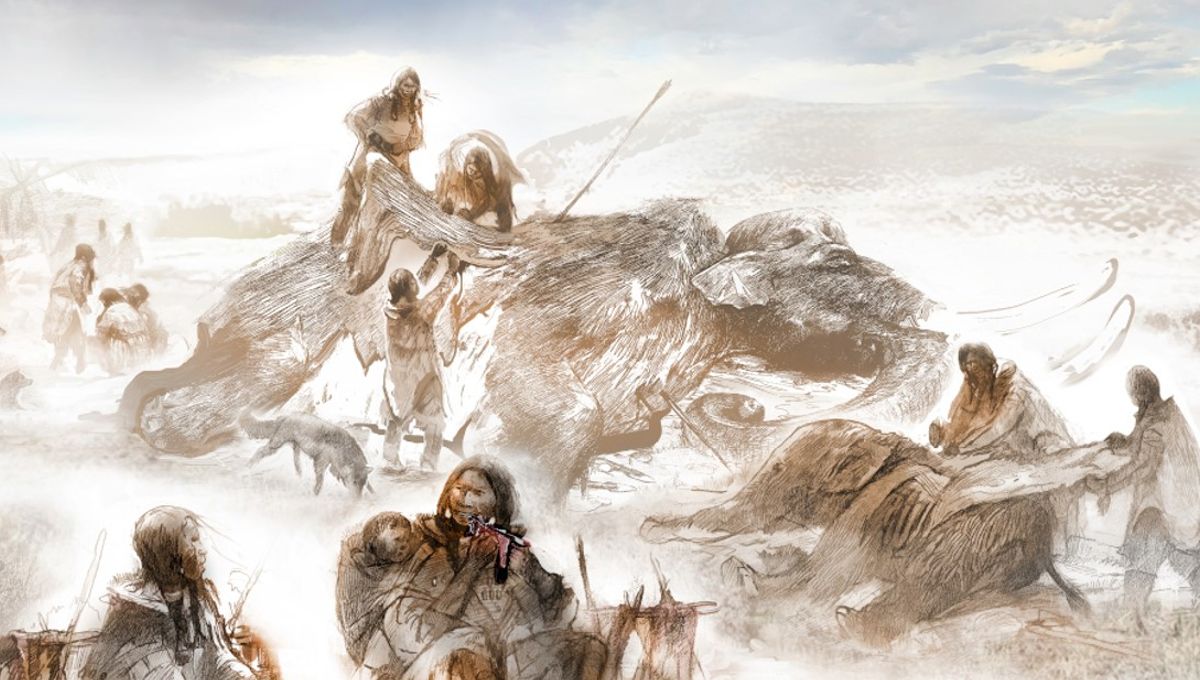
Scientists may have figured out how the earliest known culture in North America spread so rapidly across the continent. By reconstructing the diet of a toddler who lived almost 13,000 years ago in what is now Montana, the study authors discovered that the youngster and his tribe were likely specialist mammoth hunters who exploited this nutrient-rich prey to migrate over long distances.
Famous for its iconic toolkit and projectile weaponry, the Paleoindian Clovis Complex left an archaeological imprint across a vast area, spanning from Canada to Mexico. However, to date, the only skeletal remains confirmed to have belonged to the ancient culture are those of an 18-month-old boy who was buried near Wilsall, Montana, around 12,800 years ago.
Known as Anzick-1, the infant was first discovered in 1968 and re-buried in 2014, although not before scientists had a chance to conduct genetic and isotopic fingerprinting on the prehistoric bones. By analyzing the isotopic data, the authors of the new study were able to discern that the boy’s mother – who would have provided much of his nutrition in the form of breast milk – derived around 40 percent of her diet from mammoth meat, with the rest made up of other large prey like elk, bison and an extinct camel species.
Smaller animals and plants were virtually absent from the menu, confirming the long-debated theory that the Clovis people were devoted megafauna hunters rather than general foragers.
“Previously, from indirect sources like settlement patterns and tool technology and the animal bones found in campsites and kill sites, we had indications that people were at least occasionally living off large mammals and sometimes killed mammoths,” study author James Chatters told IFLScience. “But because we’re looking at bone protein, which is built up over months, we’re looking at the long term diet – and what this is telling us is mammoth was a major part of that. It wasn’t just an occasional feast day, it was a normal part of their diet.”
This finding helps to clear up some of the mysteries surrounding the Clovis people and their interactions with the North American environment. For instance, study author Ben Potter explained that because the Paleoindian culture was descended from mammoth-hunting groups in Eurasia, focusing specifically on this colossal food source probably helped them adapt to their new home and spread across the continent.
“They already knew how to exploit that prey. They’d been doing it for a long time,” he told IFLScience. “So they didn’t have a big learning curve when they moved into a new area, which you’d have to have for small animals.” Given that smaller, localized prey species can vary considerably from one region to the next, specializing in mammoths allowed the Clovis to keep moving without having to continually adapt their hunting strategies.
The team’s findings also add to our understanding of the processes that led to the extinction of mammoths and other Pleistocene megafauna at the beginning of the Holocene some 10,000 years ago. The prevailing hypothesis is that a rise in global temperatures drastically altered these species’ habitats, although overhunting by humans has also been proposed as a potential contributor to the demise of certain large mammals.
“We put back on the table that human hunting pressure could have played a role, particularly in combination with climate change,” said Potter.
“We know mammoths are highly mobile. They migrate very long distances, and if [habitat loss is] restricting their movement, that potentially could make them more susceptible to the kinds of hunting pressure that Clovis and other peoples could have put on them,” he explained. “But I think it’s really premature to say that there’s a smoking gun that it’s definitely humans.”
Summing up the perfect storm of threats faced by the ancient mammoths, Chatters added that “you’ve got a naive prey under ecological stress. Then you add in these highly capable, very sophisticated, big game hunters, and the outcome is foretold.”
The study is published in the journal Science Advances.
Source Link: Ancient Clovis People Devoured Mammoths In North America 13,000 Years Ago